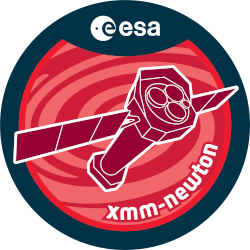

| Proposal ID | 092395 |
| Title | XMM observations of a newly discovered 25-day quasi-periodic eruption source |
| Download Data Associated to the proposal | https://nxsa.esac.esa.int/nxsa-sl/servlet/data-action-aio?obsno=0923950101 |
| DOI | https://doi.org/10.57780/esa-ky3lu4y |
| Principal Investigator, PI | Dr Dheeraj Pasham |
| Abstract | XMM discovered the phenomenon of X-ray quasi-periodic eruptions (QPEs) in 2019.Four such extragalactic systems that repeat on a timescale of a few hours havebeen identified since. The origin of these repeating signals is currentlyunclear but some ideas include disk/radiation pressure instabilities and extrememass ratio inspirals. We have identified a new QPE system which repeats onceevery 25 days, i.e., >25x longer than the longest period QPE source. We arerequesting a 30 ks exposure of this new QPE source between flares, i.e., duringthe low flux state. Our aim is to measure the quiescent phase spectrum and theburst amplitude, and compare them with the rest of the QPEs. Only XMM has thesoft X-ray coverage, large enough effective area and the sensitivity to make these measurements. |
| Publications | No publications found for current proposal! |
| Instrument | EMOS1, EMOS2, EPN, OM, RGS1, RGS2 |
| Temporal Coverage | 2024-01-25T01:20:04Z/2024-01-25T15:10:04Z |
| Version | 21.23_20231215_1101 |
| Mission Description | The European Space Agencys (ESA) X-ray Multi-Mirror Mission (XMM-Newton) was launched by an Ariane 504 on December 10th 1999. XMM-Newton is ESAs second cornerstone of the Horizon 2000 Science Programme. It carries 3 high throughput X-ray telescopes with an unprecedented effective area, and an optical monitor, the first flown on a X-ray observatory. The large collecting area and ability to make long uninterrupted exposures provide highly sensitive observations. Since Earths atmosphere blocks out all X-rays, only a telescope in space can detect and study celestial X-ray sources. The XMM-Newton mission is helping scientists to solve a number of cosmic mysteries, ranging from the enigmatic black holes to the origins of the Universe itself. Observing time on XMM-Newton is being made available to the scientific community, applying for observational periods on a competitive basis. |
| Creator Contact | https://www.cosmos.esa.int/web/xmm-newton/xmm-newton-helpdesk |
| Date Published | 2025-02-08T00:00:00Z |
| Last Update | 2025-08-04 |
| Keywords | XMM-Newton, OM, RGS, EPIC, X-ray, Multi-Mirror, SAS |
| Publisher And Registrant | European Space Agency |
| Credit Guidelines | European Space Agency, Dr Dheeraj Pasham, 2025, 'XMM observations of a newly discovered 25-day quasi-periodic eruption source', 21.23_20231215_1101, European Space Agency, https://doi.org/10.57780/esa-ky3lu4y |